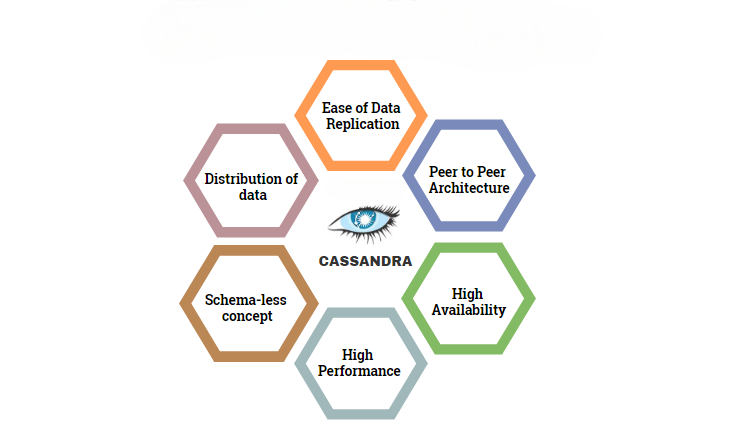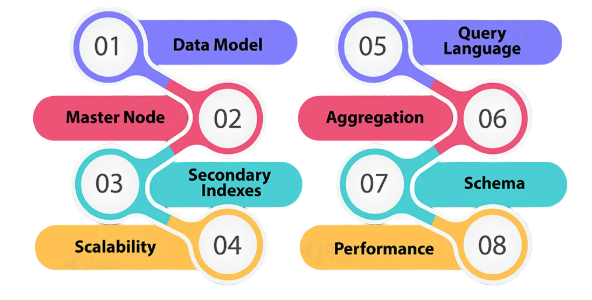
- Introduction: NoSQL Databases in the Modern Era
- What is Apache Cassandra?
- What is MongoDB?
- Data Model and Schema Flexibility
- Query Language and Interface
- Performance and Scalability
- Availability and Fault Tolerance
- Use Cases and Industry Adoption
- Conclusion
Introduction: NoSQL Databases in the Modern Era
With the explosion of unstructured data and the growing need for horizontal scalability, NoSQL databases have become a cornerstone in modern data architectures. Unlike traditional relational databases, NoSQL systems allow for flexible schemas, distributed computing, and better performance at scale. Among the many NoSQL databases available, Apache Cassandra and MongoDB are two of the most widely adopted and feature-rich solutions. While they share common goals Big Data Training of scalability, availability, and flexibility their internal architecture, data models, and use cases differ significantly. Understanding these differences is essential for making the right choice for your specific project or enterprise workload. In the modern era of data-driven applications, NoSQL databases have emerged as essential tools for managing large volumes of unstructured and semi-structured data. Unlike traditional relational databases, NoSQL systems offer flexible schema design, horizontal scalability, and high performance, making them ideal for handling big data, real-time analytics, and cloud-native applications.
What is Apache Cassandra?
Apache Cassandra is a highly scalable, distributed NoSQL database system designed to handle large volumes of data across multiple servers with no single point of failure. Originally developed at Facebook and later open-sourced, Cassandra is now a top-level Apache project. It follows a peer-to-peer architecture, where each node in the cluster has equal weight, Cassandra vs MongoDB contributing Data Architect Salary in India to both fault tolerance and load balancing. Cassandra is particularly strong in write-intensive applications and offers tunable consistency, allowing you to control the trade-off between consistency and availability.

Cassandra is particularly strong in write-intensive applications and offers tunable consistency, allowing you to control the trade-off between consistency and availability. Its wide-column store model, similar to Google’s Bigtable, makes it suitable for time-series data, real-time analytics, and high-throughput systems. Apache Cassandra is a highly scalable, open-source NoSQL database designed to handle large amounts of data across many servers with no single point of failure. It was originally developed at Facebook and is now a top-level project of the Apache Software Foundation.
Do You Want to Learn More About Big Data Analytics? Get Info From Our Big Data Course Training Today!
What is MongoDB?
MongoDB, on the other hand, is a document-oriented NoSQL database developed by MongoDB Inc. It stores data in flexible, JSON-like documents, which makes it ideal for rapidly changing data structures and complex hierarchical relationships. MongoDB is known for its ease of use, developer-friendly query language, and rich ecosystem of tools. It follows a master-slave (or primary-secondary) replication model and supports automatic sharding for horizontal scaling. MongoDB is particularly suited for applications Data Governance that require dynamic queries, real-time analytics, and rapid development cycles, such as content management systems, product catalogs, and IoT platforms. MongoDB is a popular open-source NoSQL database designed for flexibility, scalability, and ease of development. Unlike traditional relational databases, MongoDB stores data in JSON-like documents (called BSON), which allows for a more dynamic and schema-less data model.
Data Model and Schema Flexibility
One of the most critical differences between Cassandra and MongoDB lies in how they handle data models and schema flexibility.
- Uses a document model, where each record is a JSON-like BSON document.
- Supports nested fields, arrays, and embedded documents, offering rich, hierarchical data modeling.
- Schema is optional; each document in a collection can have a different structure, which allows for agile development.
- Uses a wide-column store model, organizing data into rows and columns grouped by column families Big Data Training.
- Schema is defined upfront, meaning the table structure must be declared before inserting data.
- While it supports some dynamic columns, it’s not as flexible as MongoDB in handling variable document structures.
MongoDB:
Cassandra:
If your application deals with complex, nested, or rapidly changing data, MongoDB’s schema-less design provides more convenience. However, if your focus is high-speed writes and flat, wide datasets, Data Model , Cassandra is better optimized.
Would You Like to Know More About Big Data? Sign Up For Our Big Data Analytics Course Training Now!
Query Language and Interface
Query Language and Interface mechanisms also differ widely between the two databases, influencing both development and administrative tasks.
- Uses its own MongoDB Query Language (MQL), which is expressive and powerful.
- Supports ad-hoc queries, aggregations, indexing, and search-like capabilities.
- Offers a familiar syntax for developers coming from JavaScript or JSON backgrounds.
- Employs CQL (Cassandra Query Language), which is SQL-like but limited in terms of joins, aggregations, or subqueries Data Integration .
- Designed for fast reads and writes of denormalized, flat datasets.
- Encourages designing tables based on query patterns rather than relational normalization.
MongoDB:
Cassandra:
If you need flexible querying or ad-hoc analytics, MongoDB is typically more developer-friendly. For pre-defined access patterns and simpler query structures, Cassandra delivers better performance.
Performance and Scalability
Both databases are designed for scalability, but their strategies and performance characteristics vary depending on workload types.
- Excels in write-heavy workloads, handling millions of writes per second.
- Scales linearly and horizontally with no bottlenecks due to its peer-to-peer architecture Data-Driven Culture .
- Ideal for large datasets distributed across geographies.
- Performs well in read-heavy or mixed workloads, especially with proper indexing.
- Uses automatic sharding but may require tuning to scale across very large clusters.
- Read performance can be impacted if queries are unindexed or complex.
Cassandra:

MongoDB:
If your application needs massive writes, distributed across the globe, Cassandra’s architecture is unmatched. If you’re developing Big Data Analysis a feature-rich application that requires dynamic reads and analytics, MongoDB is often a better choice.
Gain Your Master’s Certification in Big Data Analytics Training by Enrolling in Our Big Data Analytics Master Program Training Course Now!
Availability and Fault Tolerance
Data reliability is critical, especially in distributed systems. Both databases address this, but in different ways.
- Provides high availability by default, with no single point of failure.
- Uses replication and hinted handoff to recover from node failures.
- Allows tunable consistency, giving you control over read/write trade-offs Become a Big Data Analyst .
- Uses replica sets (a primary and multiple secondaries) for fault tolerance.
- Automatically elects a new primary in case of failure.
- Requires careful configuration to avoid single points of failure during primary elections.
Cassandra:
MongoDB:
For applications where uptime is mission-critical, such as telecom or banking, Cassandra offers better built-in resilience. MongoDB provides solid fault tolerance but may need additional planning for high-availability configurations.
Preparing for Big Data Analytics Job? Have a Look at Our Blog on Big Data Analytics Interview Questions & Answer To Ace Your Interview!
Use Cases and Industry Adoption
Each database has found its niche and is favored in different industry use cases.
- Telecommunications (e.g., call logs, messaging apps)
- IoT and sensor data (high-velocity write streams)
- Time-series applications (metrics, logs, financial data)
- Content delivery and recommendation systems Big Data Can Help You Do Wonders (Netflix, Spotify)
- Content management systems
- E-commerce catalogs and inventory tracking
- Mobile and web applications
- Real-time analytics dashboards
Cassandra:
MongoDB:
Many companies use both in different capacities Cassandra for backend heavy-lifting and MongoDB for application-level data stores.
Conclusion
Both Apache Cassandra and MongoDB are powerful NoSQL solutions, but their strengths lie in different areas. Your choice should depend on the specific needs of your application. In conclusion, NoSQL databases like MongoDB and Apache Cassandra have revolutionized how modern applications manage and scale data. Their ability to handle large volumes of diverse data types with high performance and flexibility makes them essential Big Data Training for today’s dynamic, data-intensive environments. While MongoDB excels in ease of use and flexible document-based storage, Cassandra vs MongoDB offers powerful scalability and fault tolerance for distributed systems. Together, Data Model they represent the strengths of NoSQL technology in meeting the demands of modern web, mobile, and big data applications, highlighting a shift away from traditional relational databases toward more adaptable data solutions.


